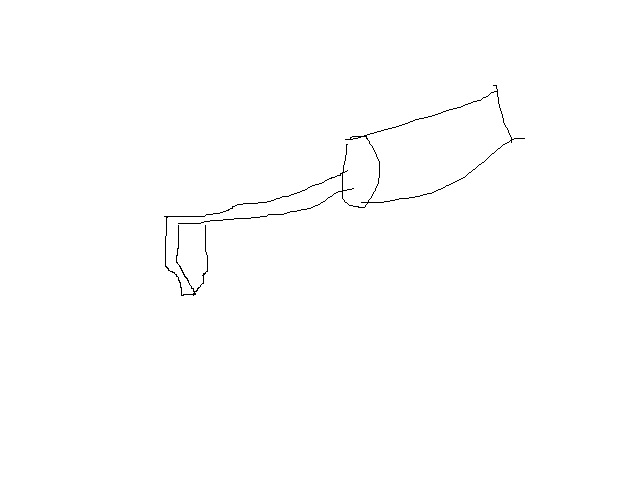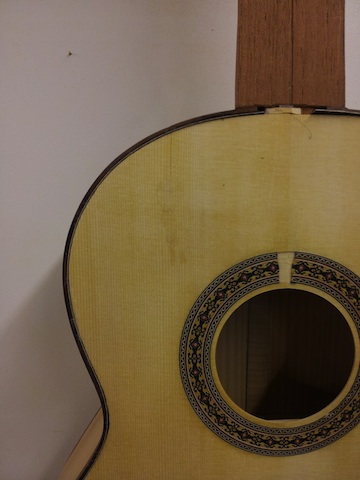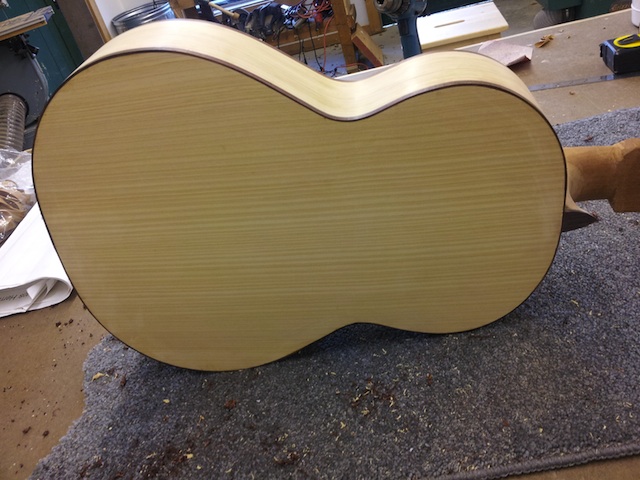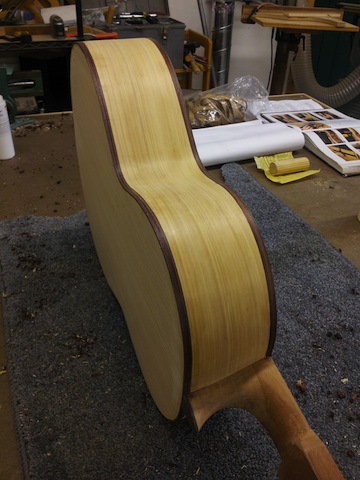Welcome to one of the most active flamenco sites on the Internet. Guests can read most posts but if you want to participate click here to register.
This site is dedicated to the memory of Paco de Lucía, Ron Mitchell, Guy Williams, Linda Elvira, Philip John Lee, Craig Eros, Ben Woods, David Serva and Tom Blackshear who went ahead of us.
We receive 12,200 visitors a month from 200 countries and 1.7 million page impressions a year. To advertise on this site please contact us.
|

|
|
RE: First Build - Troutie's Photo Journal
|
You are logged in as Guest
|
|
Users viewing this topic: none
|
|
Login  | |
|

  
Anders Eliasson
Posts: 5780
Joined: Oct. 18 2006

|
 RE: First Build - Troutie's Photo Jo... (in reply to Sean) RE: First Build - Troutie's Photo Jo... (in reply to Sean)
|
|
|
I wouldnt compare any premixed hideglue with the real thing. There is a reaso its called HOT hide glue. (HHG) The HHG is very easy to work with and when you heat and slightly moist it it "unglues". It has another fantastic effect which is used a lot in violin/Cello making. One way gluing the front on one of these bastards by first adding HHG to the front and the sides. Then let it dry overnight. Next day, when its totally dry, you clamp the front to the sides (and back, which has already been glued together) Make sure that everything is well aligned. And the you take away one or two of the 25 - 30 clamps a time, and with a knife dipped in boiling water, you dillute or unglue the HHG between the sides and the top, put the clamps on again and contiue to next set of clamps. Its very easy and very relaxing and is best done by listening to one of Bach´s Cello suites.
This is just and axample of what HHG can do and to this I will add that you can dillute it to almost water and it still works and also, it has a capacity "selftighten", whic is really good when gluing things like tentellones when building guitars, where you cant use clamps. You get a much tighter and stronger fit with HHG.
Finally and just to be an annoying little punk  : :
I find it interesting that all this internet tutorial and stuff is almost always written by americans...... oh - oh..... I get all confused by reading these things and when I compare to what I was taught, it doesnt really fit. It all sounds so complicated and mystical.. The worst is this famous French Polish guide. uhhh, am I doing everything wrong?
So here´s my danish tutorial on using HHG:
Get some HHG that the violin/Cello makers use, mix is 1HHG and 2and a bit of water. Let it stay 1/2 hour. Heat it in a bowl to around 70 degrees celcius, Add more water if you want it to be thinner. If to thin let it stay hot for a little while so that it evaporates. In most cases a thickness like good strong Andalucian or Morrocan oliveoil works the best, but for repairs like this one, make it thinner.
Ohh, and also, when you fall in love with HHG, buy her one of these sweet Herdim glue pots. She´ll love it and you as well, and then the two of you will always have something that glues you together. 
_____________________________
Blog: http://news-from-the-workshop.blogspot.com/
|
|
|
|
REPORT THIS POST AS INAPPROPRIATE |
Date Jul. 8 2012 7:53:28
 |
|

   
Dave K
Posts: 155
Joined: Mar. 29 2006

|
 RE: First Build - Troutie's Photo Jo... (in reply to Anders Eliasson) RE: First Build - Troutie's Photo Jo... (in reply to Anders Eliasson)
|
|
|
quote:
find it interesting that all this internet tutorial and stuff is almost always written by americans...... oh - oh..... I get all confused by reading these things and when I compare to what I was taught, it doesnt really fit. It all sounds so complicated and mystical.. The worst is this famous French Polish guide. uhhh, am I doing everything wrong?
Okay we get it... America bashing by Europeans is a popular thing to do. We are aware that some of the guild systems or apprenticeships in Europe do a great job of training, even though they can at times, be restrictive and stifle innovation. America has some of those systems in place also but are usually not government controlled and are more likely to be controlled by unions created by the working man, such as plumbers, ironworkers, electritions, and etc. For the most part American luthiers are an independant bunch, ready to share their innermost secrets - Problem is, over the internet, it's sometimes difficult to access just who's the real pro and who's an armchair luthier (amature) like myself who's built only a couple of instruments. The Guild of American Luthiere, MIMF, and other less known organizations freely ( as much as they can) give their knowledge in the hopes of bringing lutherie to it's highest possible acheivement. We all want good guitars, right? If you have a better way of French polishing, let us all know about it, maybe our guitars will start looking better. Although, I've seen Stephen Faulks guitars and I doubt it could be done better by anybody, including European guild graduates.
So, please don't be an "annoying little punk" and let us give our (sometimes missguided) advise, so we can screw up the rest of the world's luthiers. 
By the way Anders, I love your guitar esthetics, and think you and Norman play the most "Flamenco" of guitars on the forum.
Oh ****, I hope I'm not hijacking this thread??? Sorry 
Cheers, Dave
_____________________________
Avise La Fin
|
|
|
|
REPORT THIS POST AS INAPPROPRIATE |
Date Jul. 9 2012 1:39:15
 |
|

   
estebanana
Posts: 9351
Joined: Oct. 16 2009

|
 RE: First Build - Troutie's Photo Jo... (in reply to Sean) RE: First Build - Troutie's Photo Jo... (in reply to Sean)
|
|
|
What???
You don't mix your HHG with the blood of a lamb and have a Haitian vodoun ceremony everytime you make Glue?
Fracking heathens.
I am equally annoyed by tutorials and the punked out equal of my good associate Anders Rotten. Well maybe I'm a little more old goth, the bats are in the bell tower Bauhaus, but still gregariously cynical.
Tutorial are there so that you don't have to write the same information over and over. Tutorials help inform someone, not really about the totality of the subject, but tutorials teach beginners which question to ask next. They are give the beginner the language of the trade. While tutorials can be heavy handed, and many are over, over, over explained, at least they give the new person a more sophisticated language and range of ideas to work with.
The salient points about hide glue are these:
Clarity, strength, surface preparation, temperature to heat to. That is a lot of ideas, and it's true you learn more about this medium by using it than you do about reading up on it.
So why not premixed cold hide glue instead of this trouble some hot glue?
Cold glue preparation can fail due to 'creep'. Basically the glue can get soft much easier then the hot applied glue and if under pressure it can slide, the slide action is very small, but its called creep.
Hot hide glue also is less damping than other glues. It is stiff and light. Hide glue and Titebond used in various ways to take advantage of hide glues stiffness and Titebond's open working time is what a beginner should focus on. There are other more esoteric glues like fish glue, but it's not needed at the beginning.
The protein chains in hide glue breakdown if you heat it above 145 F - After that the glue could possibly be compromised in strength. Something to remember.
HHG does not need a rough surface to adhere to. Creating a mechanical bond be making the glue surfaces rough is wrong, hide glue creates a molecular bond. Smooth dry tight fitting joints are what you shoot for.
Now I must go choke a chicken.
_____________________________
https://www.stephenfaulkguitars.com
|
|
|
|
REPORT THIS POST AS INAPPROPRIATE |
Date Jul. 9 2012 17:39:51
 |
|

   
estebanana
Posts: 9351
Joined: Oct. 16 2009

|
 RE: First Build - Troutie's Photo Jo... (in reply to Sean) RE: First Build - Troutie's Photo Jo... (in reply to Sean)
|
|
|
Troutie, use hide glue. And practice cutting the grain out on scrap.
Another way to do this is to make a tool that is a one toothed rip saw. You can make this from an old nail or file. Take a good old 16 p. steel nail and drive it into a handle. Then lightly grind or sand the tip into a narrow saw tooth, It is like miniature scraper. Then chuck that in a heavy vise and bend the end of the so the tooth points down.
You should have a handle with short hooked scraper tooth on the end. File and sharpen that tooth until it is a few thou wider than your crack. On a piece of scrap take a steel ruler an pull that scraper saw with the grain and you should be able to scrape a very tight accurate mini channel. Once you have tuned up the tool to do this and practiced to your satisfaction, take the rest of the day off. Think about it overnight and the next day practice gain and see if you are still on target...
If you can repeat your channel making the next day take breath and open up the crack in your top using the steel rule.
Next use a #11 scalpel or razor blade and slice a tall thin sliver from your scrap. See if you can fit it in the channel. If the sliver is too wide skive off some wood and make it thinner by laying it on its side and scraping it with the razor. You may even compress it a bit, which is good. Then keep fitting and when you feel it difficult to remove take clean finger wipe hot watery hide glue deep into the channel quickly dab some on the sliver and carefully slip it in. If done carefully it will not need clamping, it will seat in by expansion of the wood absorbing heat a moisture.
That is one way, there are other ways. But practice on scrap first. And remember even if you do a subpar job on the guitar you can reverse it and try agin, if you use hide glue. if you use white glue your screwed.
When doing invisible repair work Hide glue almost all of the time and then CA where you have rose woods or ebony. Just a general rule.
I need to make one of these rip saw scraper tools myself, I lost mine in the move. If you want to try that an have questions let me know. I learned all this from Gene Clark, he since published some of these things in the GAL publication. I even collected old nails for him to make the tools. Modern nails have bad steel, prewar nails from demo work on old houses have good nails, as you must know. With a hand full of old nail steel and you can make some pretty good little tools, both hot and cold forged.
_____________________________
https://www.stephenfaulkguitars.com
|
|
|
|
REPORT THIS POST AS INAPPROPRIATE |
Date Jul. 20 2012 1:47:03
 |
|
 New Messages New Messages |
 No New Messages No New Messages |
 Hot Topic w/ New Messages Hot Topic w/ New Messages |
 Hot Topic w/o New Messages Hot Topic w/o New Messages |
 Locked w/ New Messages Locked w/ New Messages |
 Locked w/o New Messages Locked w/o New Messages |
|
 Post New Thread
Post New Thread
 Reply to Message
Reply to Message
 Post New Poll
Post New Poll
 Submit Vote
Submit Vote
 Delete My Own Post
Delete My Own Post
 Delete My Own Thread
Delete My Own Thread
 Rate Posts
Rate Posts
|
|
|
Forum Software powered by ASP Playground Advanced Edition 2.0.5
Copyright © 2000 - 2003 ASPPlayground.NET |
0.09375 secs.
|


 Printable Version
Printable Version









 :
: 









 New Messages
New Messages No New Messages
No New Messages Hot Topic w/ New Messages
Hot Topic w/ New Messages Hot Topic w/o New Messages
Hot Topic w/o New Messages Locked w/ New Messages
Locked w/ New Messages Locked w/o New Messages
Locked w/o New Messages Post New Thread
Post New Thread